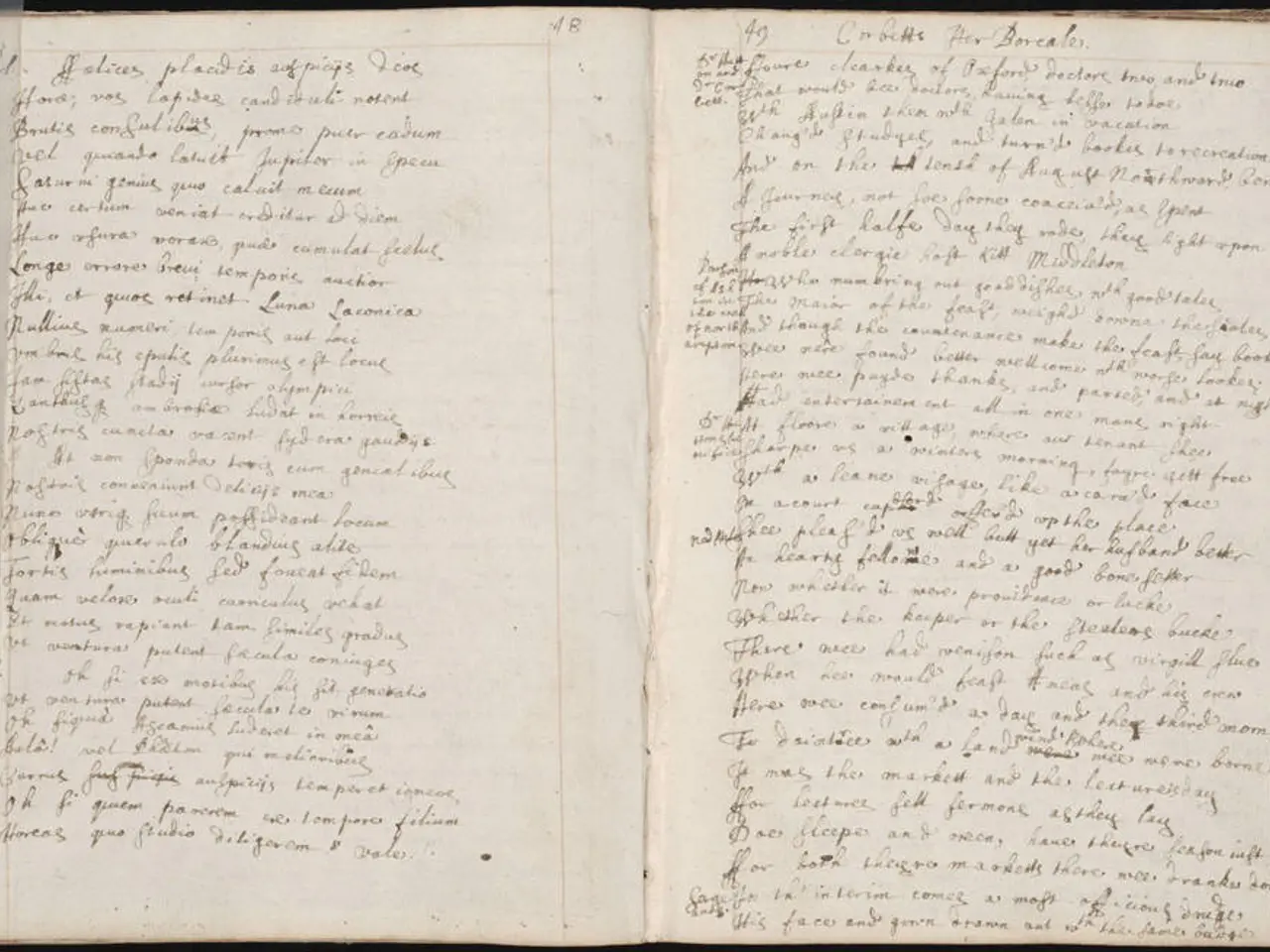Guidelines for Implementing Initial Developmental Revisions
In the world of literature, the process of developmental editing can often feel like a daunting task for authors. However, one writer has found a unique approach that has proven to be both effective and rewarding - the 'Frankenstein' method.
This method, similar to the author's own process, requires thinking on the page and meandering through character thoughts to decide what to keep or discard. It allows for experimentation with dialogue and scenarios, giving writers the freedom to explore different avenues before refining their work.
The author, who has ended up with a story they feel is their best work to date, has also gained a better understanding of their long-term process for future developmental edits. This approach has not only improved their current work but has also equipped them with valuable skills for the future.
The 'Frankenstein' method encourages writers to engage actively with hands-on examples, critically evaluating suggested changes, and focusing on story-level improvements. By treating developmental editing as a process involving multiple stages, authors can ensure that their revisions are effective and their growth as writers is supported.
One key aspect of this method is the use of brackets. During the revision process, bracketed areas are "stitched" into the story with prose, narration, description, or whatever is needed to apply the change. This method actively protects the good stuff and gives targeted places to change.
The author created a checklist document of all changes that needed to be made, with headings for each section and a heading for "big picture" items. They looked over the items listed under the "big picture" heading and identified the places it made sense to address the change.
However, the author admits that this process is not without its challenges. They experienced imposter syndrome and needed some distance from the project to restore their confidence. They took a break to outline a more light-hearted story they were passionate about.
The author also learned to trust their writer instincts and discern what their story needed, even throwing away advice from their developmental editor. They sought feedback from people who had read the initial drafts and raved about it, to ensure they hadn't deviated from the original premise.
Filling in brackets during the revision process was rewarding but exhausting for the author, who needed a break and worked on a fun side project for a few days. They believe that, ultimately, only they care for their stories as much as they do.
The author found a YouTube video by Jessica Brody titled "How to Revise Your Novel Using the 'Frankenstein' Method" which provided a method for applying developmental edits seamlessly. Despite researching for weeks, they found only one helpful video on applying developmental edits from the writer's side.
The author encourages others to share their tips and tricks for applying revisions, and is open to trying new things. By embracing editorial feedback as a revision blueprint, engaging actively with hands-on examples, critically evaluating suggested changes, and focusing on story-level improvements, writers can apply developmental edits effectively and grow their craft.
This method of developmental editing, based on the 'Frankenstein' approach, not only enhances current work but also equips writers with valuable skills for long-term learning and self-development in education and self-development. The use of brackets, critically evaluating suggestions, and focusing on story-level improvements supports lifelong learning for authors, ensuring they continue to grow and improve their craft.




